Jan Frank Is One of Downtown New York’s Most Storied Artists, Even If the City Never Gave Him His Due
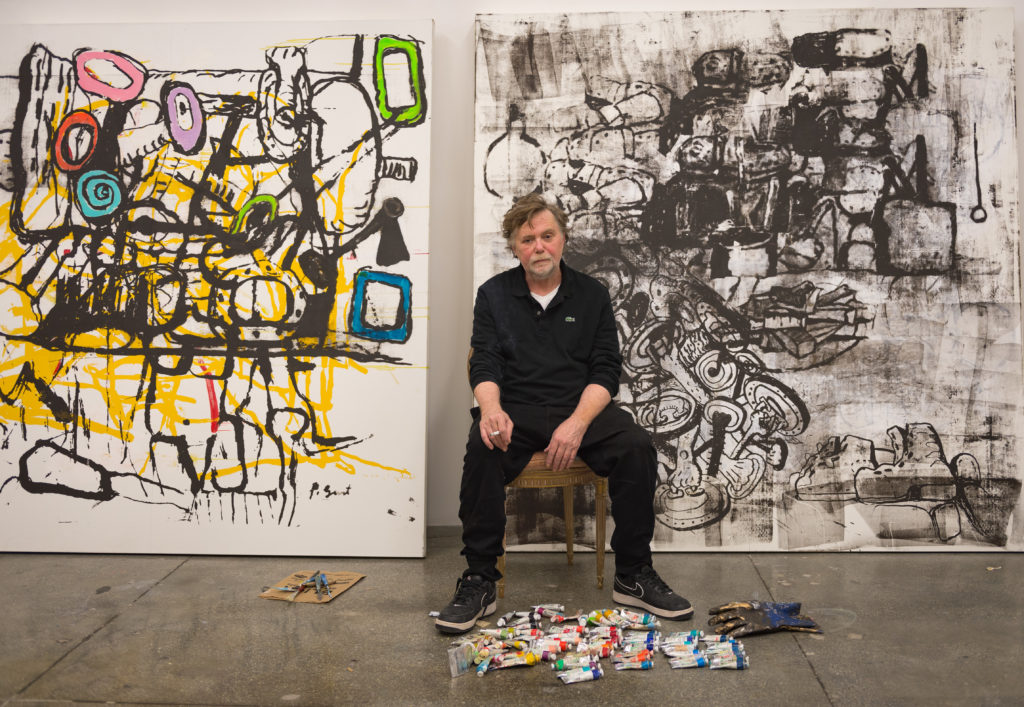

Taylor Dafoe

To talk about artist Jan Frank, you have to begin with his stories. He has a lot of them, and they often tie into major—even mythic—strands of 20th-century art history. The 66-year-old has gotten stoned with Louise Bourgeois, shared a studio with Chuck Close, and was the frequent recipient of intoxicated calls from de Kooning. He met Carl Andre the night Andre got out of Rikers Island after being arrested for Ana Mendieta’s death, and had a drunken dinner with Julian Schnabel and Phillip Guston at “some Rabbi’s house” a few days before Guston passed away.
He even got in a bottle fight with Jeff Koons once upon a time. “I walked into a bar, and Koons was with two women,” Frank recalls for artnet News. “He said, ‘Get out of here, Jan.’ I said, ‘Fuck you.’ And then he threw a fucking Heineken bottle at me. So I threw one back at him. And then we hung out in the street just tossing bottles at each other.” Frank chuckles, as if proud of his exploit, and then adds: “He was an asshole.”
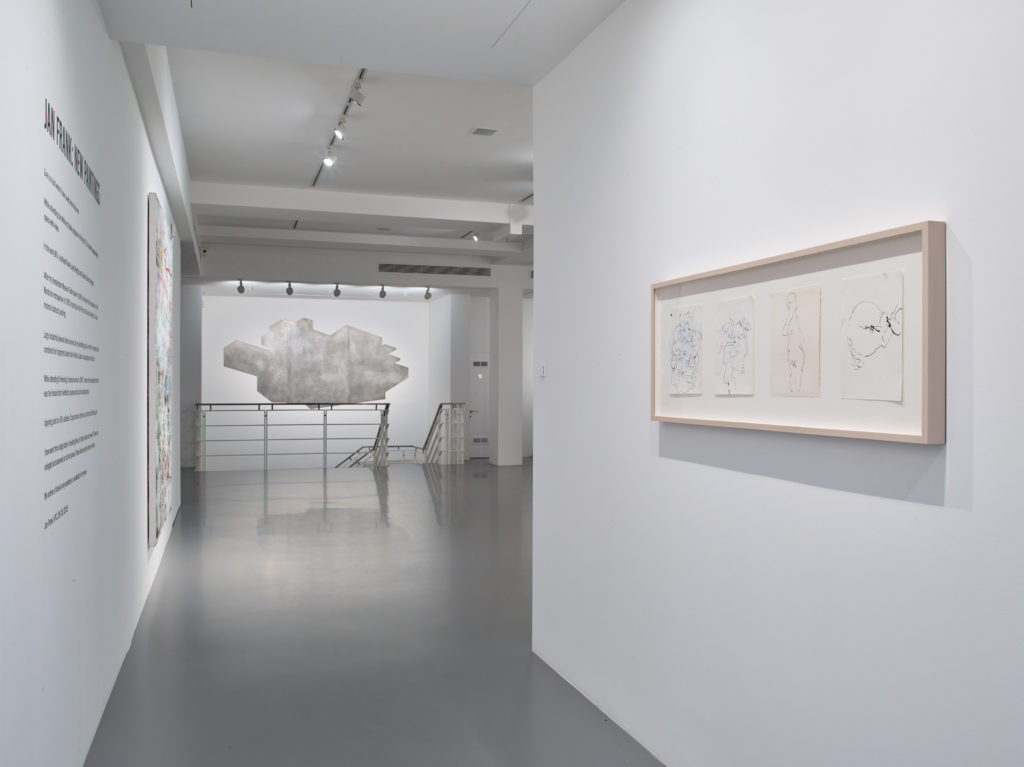
Installation view of “Jan Frank: New Paintings” at Nahmad Projects. Courtesy of Nahmad Projects.
In fairness, one might want to take these accounts with a grain of salt. Stories evolve each time we tell them, taking on a life of their own, and you get the sense that Frank’s have been told a lot. Plus, the artist has a reputation as a hard-partier, and a haze of intoxication is vital to the humor of many of his reminiscences, which can give them the outsize contours of a tall tale.
To put it another way: If Frank’s story was a novel, we might think of him as an unreliable narrator.
But that’s part of what makes him who he is. And all these qualities—the verve, the boyish mischief, the slippery sense of veracity, and the mythology of the New York art world—are manifest in his work. Just look at his new show at Nahmad Projects in London—his first in the UK. Titled “Jan Frank: New Paintings,” the exhibition brings together nude drawings, two large-scale, formally rigorous installations Frank first created in the 1980s, and a group of abstract paintings that reference Bourgeois, Guston, and Jackson Pollock—sometimes all at once.
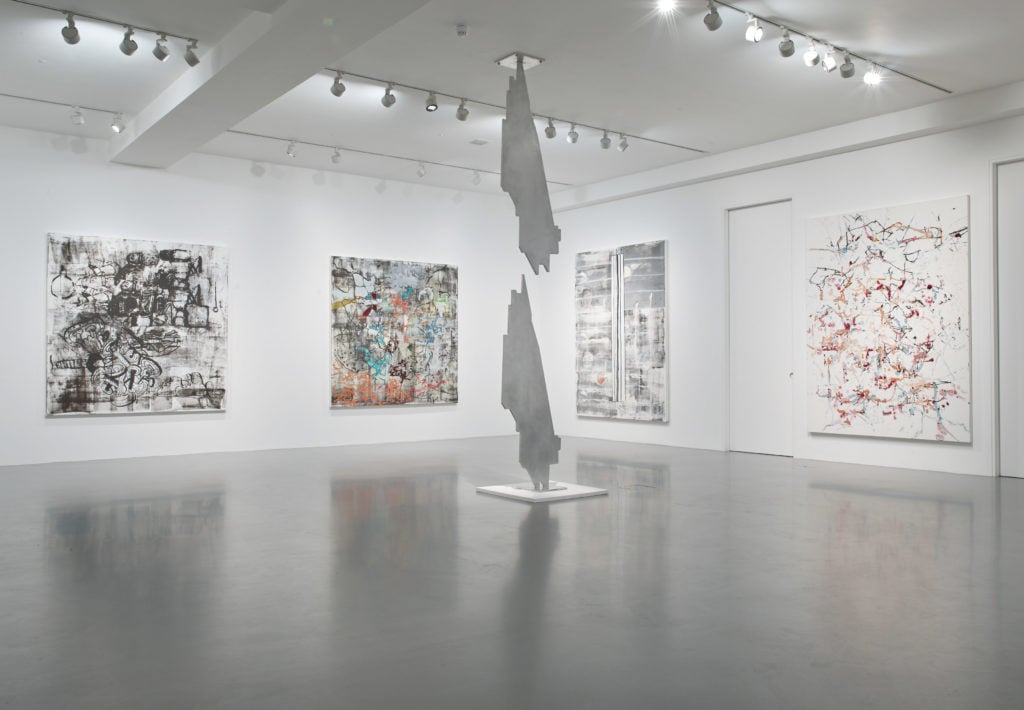
Installation view of “Jan Frank: New Paintings” at Nahmad Projects. Courtesy of Nahmad Projects.
Frank was born in Amsterdam in 1951 and lived in the Congo for the first few years of his life. His family immigrated to the United States when he was six, landing first in Detroit before finally settling in Wisconsin. After attending the University of Wisconsin–Madison, he moved to New York to participate the Whitney’s Independent Study Program, studying under Ron Clark, Vito Acconci, and Yvonne Rainer.
Upon finishing the Whitney program in 1978, he found himself a loft in SoHo—the same spot he lives and works in today. When he first moved in, the neighborhood was run-down, cheap, and dangerous. Today the block is among the most expensive in New York, if not the country. He once occupied the entire fourth floor of his building, but several years ago the building’s owners prevailed upon him to give up half of it. He’s since moved into a second studio in Hoboken—a much-needed space upgrade for the painter, who regularly works on canvases eight or nine feet tall.
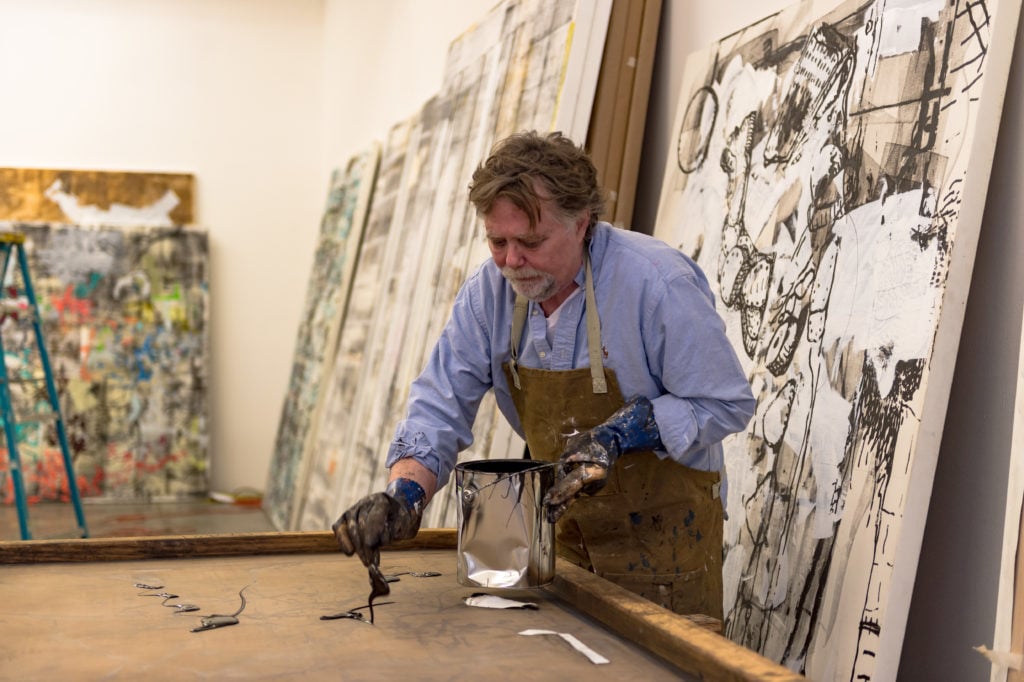
Jan Frank painting on a screen print, 2017. Photo: Robert Banat.
At first glance, Frank’s paintings look like they are heavily influenced by the New York school of Ab-Ex artists, many of whom he knew. But to say that his work is in conversation with those artists wouldn’t be entirely correct. Frank isn’t talking to them; he’s stealing from them.
That is to say he appropriates lines and motifs directly from earlier paintings, both his own work and that of a handful of iconic artists—Guston, Pollock, and his favorite, de Kooning. He screen-prints them onto blank canvases, but does so in patchy, overlapping fragments, playfully wielding the squeegee as if it were a brush rather than a tool for distributing paint evenly. He repeats the process as many as five times, creating a base layer of dense gestures and references. Atop that he paints another layer of abstracted forms, often reusing the same appropriated lines and figures that he started with. The result, with its tangled combination of references, is like a remix of a pop song: part theft, part homage, all new.
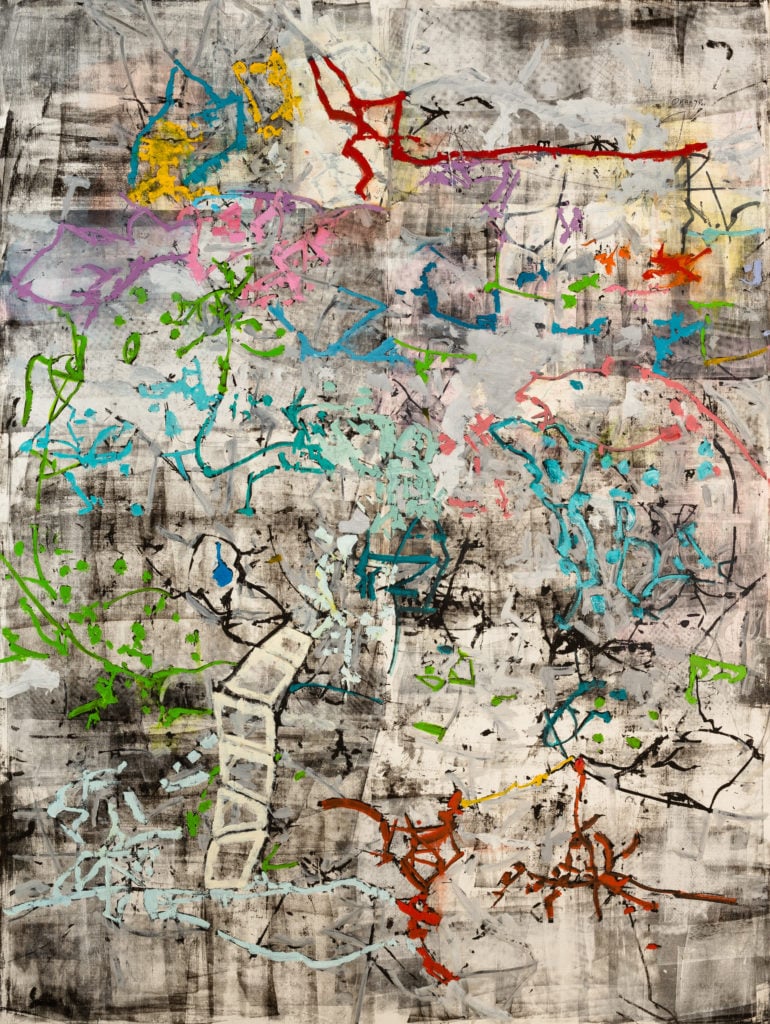
Jan Frank, Mr. President (2018). Courtesy of the artist and Nahmad Projects.
Frank considers his paintings to be largely figurative, and many of the lines that make up the final composition—those not borrowed from other artists—actually come from minimalistic nude studies he regularly creates from live models in his studio. The idea for this process came to him, oddly enough, while he was sitting next to Larry Gagosian and Matthew Marks at de Kooning’s funeral.
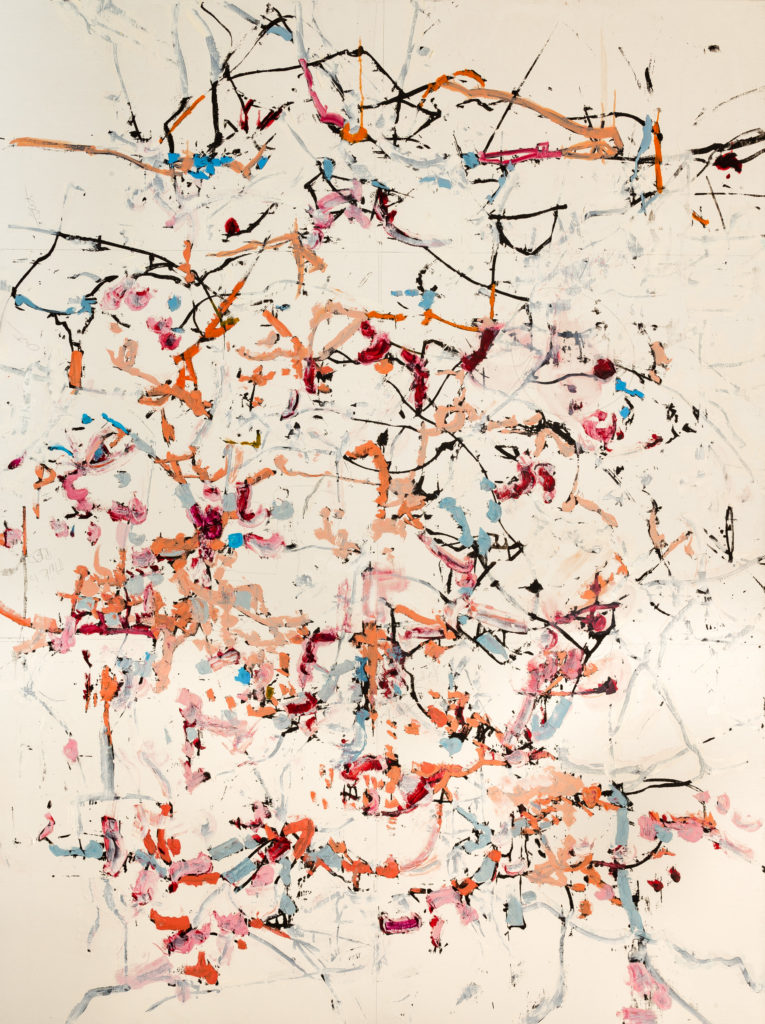
Jan Frank, Happily (2018). Courtesy of the artist and Nahmad Projects.
While many of Frank’s stories derive their wattage from cameos of people whose careers are more successful than his, he has, by many standards, achieved a great deal of recognition of his own. He has exhibited his work in hundreds of shows throughout the world, developing a relatively strong market outside of the U.S., particularly in parts of Europe and Australia. But despite being considered by some to be one of the quintessential downtown New York artists, Frank has never achieved true fame in his home city.
“I’m not politically correct,” says Frank, when asked why he hasn’t achieved the renown of his peers. “I kind of keep to myself. I’m probably the most famous un-famous artist.” And that, of course, is the stuff of myth.
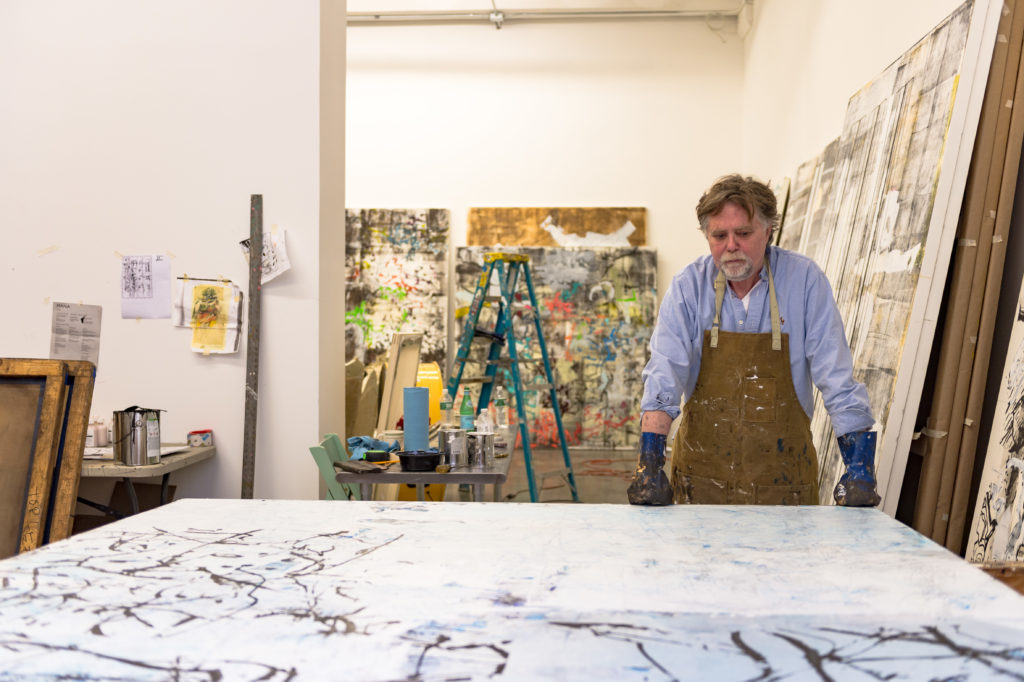
Jan Frank in his Hoboken studio. Photo: Robert Banat.
“Jan Frank: New Paintings” is on view through April 20, 2018. Nahmad Projects is located at 2 Cork Street, London.